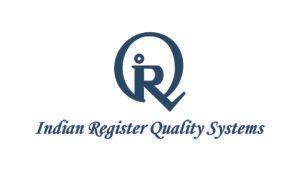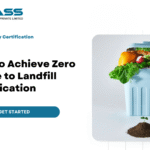What is ResponsibleSteel? A Comprehensive Guide to Sustainable Steel Certification
May 16, 2025 2025-05-30 12:21What is ResponsibleSteel? A Comprehensive Guide to Sustainable Steel Certification

What is ResponsibleSteel? A Comprehensive Guide to Sustainable Steel Certification
Steel is the backbone of modern civilization. From towering skyscrapers and high-speed railways to clean energy technologies, steel enables progress. But this progress comes at a cost. The steel industry is one of the largest industrial emitters of carbon dioxide, accounting for nearly 10% of global energy-related greenhouse gas emissions. This figure alone positions steel as both a challenge and an opportunity in the global sustainability movement.
This is where ResponsibleSteel comes in. It is a global initiative rewriting the rules of steelmaking by blending industrial progress with environmental and social responsibility. But what is ResponsibleSteel? Why does it matter? And how can companies become part of this movement?
Let’s explore the answers in this complete guide.
The Need for a Sustainable Steel Standard
There used to be no accepted international standard for sustainability in the steel industry. The majority of regulations addressed emissions, energy efficiency, or safety one at a time. Still, sustainability has many different aspects. It focuses on climate change, human rights, conserving resources, transparency, governance, and other topics. Since there was no single, tough certification program, ResponsibleSteel was created to bridge that gap.
What is ResponsibleSteel?
ResponsibleSteel is the first worldwide multi-stakeholder program focused exclusively on the steel industry. It helps ensure that steel is sourced and produced in a responsible way throughout the process. The organization, which is non-profit, connects producers, civil society groups, sustainability experts, and customers to change the steel industry from the inside.
Basically, ResponsibleSteel is a certifier and creator of standards, but its influence extends well past simple checklists. It explains how ethical and sustainable steel production should be carried out in a world with carbon constraints.
The International Production Standard
To be certified, steelmakers must adhere to the International Production Standard created by ResponsibleSteel. This standard took seven years of consultation and development, involving many stakeholders around the world.
The standard consists of 13 principles that address many aspects of environmental, social, and governance (ESG) issues. These include:
- Leaders in corporations and ethical management
- Working to reduce climate change and greenhouse gas emissions
- People’s rights and the conditions they work in
- Looking after biodiversity and water
- Checking the supply chain
- Stakeholder engagement
- Safety and health at work
- Dealing with the local community
As a result, ResponsibleSteel-certified sites focus on being responsible, clear, and sustainable.
What You Need to Know About Certification
The process toward certification is both orderly and adaptable, allowing many types of operations to be involved without compromising standards.
To start, the facility evaluates itself in relation to the 13 principles. After that, an accredited certification body performs a Stage 1 audit. This means reviewing documents, analyzing risks, and detecting any missing areas.
The second audit, Stage 2, is more thorough. It covers visiting the site, interviewing employees, meeting with stakeholders, and checking the company’s policies and outcomes. If the audit passes, the report goes to ResponsibleSteel’s Assurance Panel for a final decision on certification.
Following certification, a facility is reviewed by an audit after 18 months and must be recertified every three years. This ensures the company stays compliant and improves over time.

The Progress Levels: A Road to Exceptional Results
ResponsibleSteel stands out because it looks at progress, not just certification. The initiative sets out four levels of progress linked to key sustainability aims such as reducing carbon emissions and using responsible materials.
As a result, certified sites are able to highlight improvements that go above the basic requirements. With certification in both areas, the site’s products are eligible to be called Certified Steel, which enhances its marketing.
As the world’s expectations change, the Progress Levels change too, helping companies to keep improving.
What Makes ResponsibleSteel Certification Important
More people around the world are looking for ethical and environmentally friendly materials. Green buildings, sustainable infrastructure, and ESG investing are now accepted by the mainstream. The ResponsibleSteel certification allows steelmakers to follow international trends and answer calls for accountability.
Let’s take a look at some immediate advantages of certification:
- Certified steel is trusted more and is more appealing to the market
- Clear ESG policies bring in investors who care about responsibility
- Stricter climate and environmental laws: Prepares the company for tighter regulations
- By using best practices, performance within the company can be improved
- Social License to Operate: companies can build better relationships with communities and labor groups
These benefits are having real effects on procurement, investment, and how people shop.
How the Industry Affects Others
As more companies gain ResponsibleSteel certification, everyone in the steel value chain is held more accountable. As a result, changes are made in each factory as well as among suppliers, contractors, customers, and regulators.
It’s no longer enough for a single company to be responsible—it’s important to build an entire network of responsibility.
Certified producers now have an advantage in public infrastructure contracts because governments and procurement agencies are choosing ResponsibleSteel products.
The Tasks of Certification Bodies
ResponsibleSteel relies on strong partners to make its vision a reality. An independent third party called a certification body conducts audits, verifies that rules are being followed, and maintains the integrity of the certification.
They are important for assessment as well as for guiding and helping organizations obtain certification. They do more than audit; they help steel producers follow international standards and put sustainability into practice.
The right certification body can help ensure your certification process is smooth and effective.
ResponsibleSteel and the Challenges of Decarbonization
Let’s focus on climate for a moment. Making steel uses a lot of energy. Extracting iron ore, smelting it, and refining it all produce carbon emissions. Even so, solar panels, wind turbines, and electric vehicles all require steel.
This situation means that low-carbon steel is now an important requirement, not merely a possibility. ResponsibleSteel deals with climate challenges by applying tough criteria and tracking emissions at every stage of production. It encourages companies to use science-based goals, cleaner solutions, and new ways in the circular economy.
Through ResponsibleSteel, companies show they are proactive about climate concerns.
A Certification for the Next Generation
ResponsibleSteel is more than a certification; it’s a movement. It’s focused on helping one of the world’s most vital industries understand how its role affects the planet. It sees that both growth and responsibility need to be part of the same process.
Because steel is still the top choice for building, the way it is made will be very important. Leaders will be distinguished from laggards by the answer.
How Is ResponsibleSteel Certification Different?
Unlike general environmental or safety certifications, ResponsibleSteel is the only global standard made specifically for the steel industry. It goes beyond focusing on just emissions or safety — combining climate action, human rights, responsible sourcing, and governance under one system.
Plus, it’s built through a multi-stakeholder approach, meaning not just industry voices but also NGOs and civil society shape the rules. This makes it broader and more credible compared to single-focus or internal company certifications.
In Conclusion
If your organization operates in the steel supply chain and you want to prepare for the future, now is the moment to choose certification that counts.
That’s when IRQS becomes useful.
For more than 30 years, IRQS has provided support for organizations seeking ResponsibleSteel certification using its global accreditation. As a leading authority, IRQS uses its industry knowledge and international best practices to assist steel producers in reaching the top standards in ESG, climate care, and good operations.
When you are committed to leading with honesty, openness, and sustainability, IRQS will be there to help you all the way.





